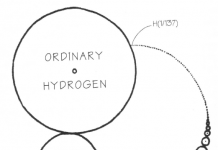Dana Blankenhorn
If there is one thing I’ve learned as a tech reporter it is that failure is common, but what we learn from failure can often lead to greater success.
Back in 1984 I was asked to help write the manual for a start-up called The Promise. The Promise would offer home banking, home shopping, and information services, delivered to your PC.
The Promise failed almost before the lights went out on the press conference. It was at least a dozen years too early. There was no Internet, and I worked on a double-floppy IBM PC.
Fortunately its owner knew how to make lemonade from lemons. Recognizing that his programmers had just created a general-purpose engine for Electronic Data Interchange (EDI), he eventually turned that company into $6 billion.
Don’t confuse the fate of a company with that of a technology. Sometimes the technology is being applied in the wrong way. Sometimes the company is trying to run before it can walk.
That’s the important lesson in the Brightsource IPO. Brightsource is trying to go public because its private investors, including Google, can’t take it past its Ivanpah solar mirrors project, a $1.6 billion effort to build utility-grade solar technology using mirrors in the California desert.
The project is risky as all get out. There are lawsuits aimed at stopping it , there are questions over whether they can get the thing built, and how they’re going to maintain it.
It is, in tech parlance, a “moon shot.” High risk, high potential reward.
Personally I’m guessing FAIL. This is really old technology, it’s scaled beyond what makes sense, most of the management team has more gray hair than I do.
But it’s not my money, and in the end the fate of the company makes much less difference to the industry than analysts think. Solar power doesn’t have to come from ginormous installations hundreds of miles away. Projects don’t have to be utility-scale in order to work. Brightsource is building the tech equivalent of a Cray 1 computer – it’s interesting, and it might work, but in the end it’s a niche product, and there are other ways of doing the same thing.
None of that means I’m rooting against Brightsource. If they’re able to make a business with solar mirrors, that’s great. But the credibility of the industry is not on the line here. And the lessons being learned in the attempt could prove invaluable down the road, both to the people running Brightsource and the rest of us.
Dana Blankenhorn first covered the energy industries in 1978 with the Houston Business Journal. He returned last month after a short 29 year hiatus because it’s the best business story of our time. In between he covered PCs, the Internet, e-commerce, open source, the Internet of Things and Moore’s Law. It’s the application of the last to harvesting the energy all around us he’s most excited about. He lives in Atlanta.



